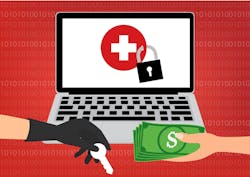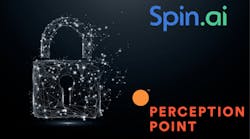In the ever-evolving healthcare cybersecurity landscape, recent breach disclosures have raised concern about a series of threats posing risks to patient data and organizational integrity. Threats deemed “critical” are proliferating. These threats not only expose sensitive patient information but also open the door to potential remote code execution, granting hackers the highest level of privileges.
Amid urgent calls to update SolarWinds, the unsettling revelation that Mirth Connect is vulnerable to exploitation without authentication, and an overarching imperative to protect customer information, the industry stands at a critical crossroads. In this sector, where maintaining compliance with regulations like HIPAA is paramount, swift and decisive action is required to mitigate emerging risks. Healthcare organizations should take the following proactive measures to reduce IAM risks across their people, processes, and technologies.
Exercising Key IAM Practices
The stakes are higher than ever – access to sensitive patient data, proprietary information, and the potential for unauthorized manipulation of critical systems underscore the need for preventative measures.
Healthcare organizations must take immediate action to bolster their security posture against these threats. Key Identity and Access Management (IAM) practices are an ideal starting point. These foundational measures go beyond checking compliance boxes and help to establish a robust cyber defense. For example, incorporating tactics such as single sign-on (SSO) and multi-factor authentication (MFA) can significantly mitigate the risk of unauthorized access, providing an essential first line of defense. Identifying areas where additional maturity can be achieved, such as adaptive MFA and attribute-based access controls, can quickly introduce additional layers of difficulty for threat actors.
Designing Strong Onboarding and Offboarding Strategies
The fluid nature of healthcare teams, with members often coming and going, also necessitates an organized approach to managing employee permissions. Healthcare organizations should prioritize creating comprehensive onboarding and offboarding checklists. These protections ensure that, even in times of organizational flux, access privileges are meticulously controlled, minimizing the risk of exploitation.
Healthcare organizations may also consider automating onboarding and offboarding processes to reduce the potential for human error. This automation both enhances efficiency and adds a layer of security by minimizing time lapses when unauthorized access occurs.
Onboarding and offboarding periods are also ideal for security awareness training. In the end, people are often the weakest links in security, thus healthcare organizations should regularly refresh all employees on best practices for password management, email protection, and how to identify possible red flags to reduce attack risks. Organizations should also ensure every employee knows where to report suspicious activity, and that they have the training to not fall for phishing and business email compromise (BEC) attacks.
Finding the Balance in Centralized Monitoring
While security centralization can have downsides after an attacker breaches a system, healthcare organizations should still centralize IAM functions to maximize control and visibility. This will help better monitor who has access across the system, with the ability to update permissions at any time and to enhance visibility and responsiveness to potential threats.
Healthcare organizations might consider investing in robust IAM and network management solutions to achieve this objective. These solutions should offer real-time monitoring, remote access capabilities, and automated alerts for any network issues or breaches. Proactive monitoring for anomalous behavior detection is the key to identifying and neutralizing threats before they escalate. Consolidating monitoring functions into a holistic view of an identity's actions within the context of active threats enables healthcare organizations to respond to potential threats more efficiently.
Improving for the Future
Considering critical cybersecurity threats, healthcare organizations need to strengthen their IAM practices and educate their employees to fortify their security programs. The healthcare industry's response to emerging cybersecurity threats must be swift and strategic.
By harnessing IAM best practices and security awareness training, healthcare security teams can reduce their risks of data breaches to better protect proprietary and patient data. The time to act is now, and healthcare organizations that take a proactive approach can close the door to critical threats before they become breaches.
Zubaid Kazmi is the Managing Director for Identity and Access Management at MorganFranklin Consulting. Before joining MorganFranklin, Zubaid held managing director and director positions at large and boutique consulting firms with a specific focus on Identity & Access Management and Digital Identity governance. Combined with over 20 years in professional service, Zubaid brings his experience advising clients on how to realize their IAM transformation objectives while advancing their compliance, security, and business initiatives.



